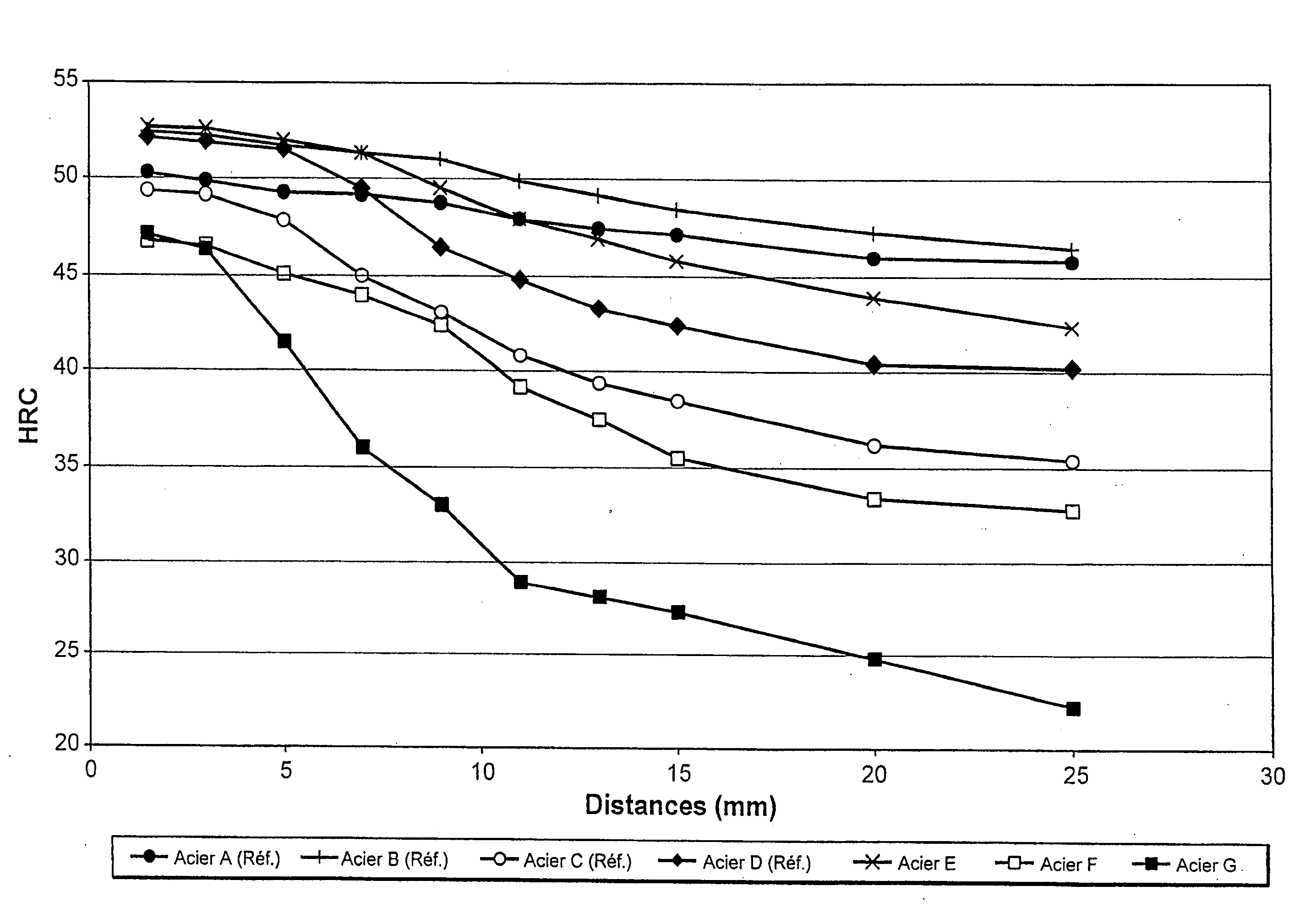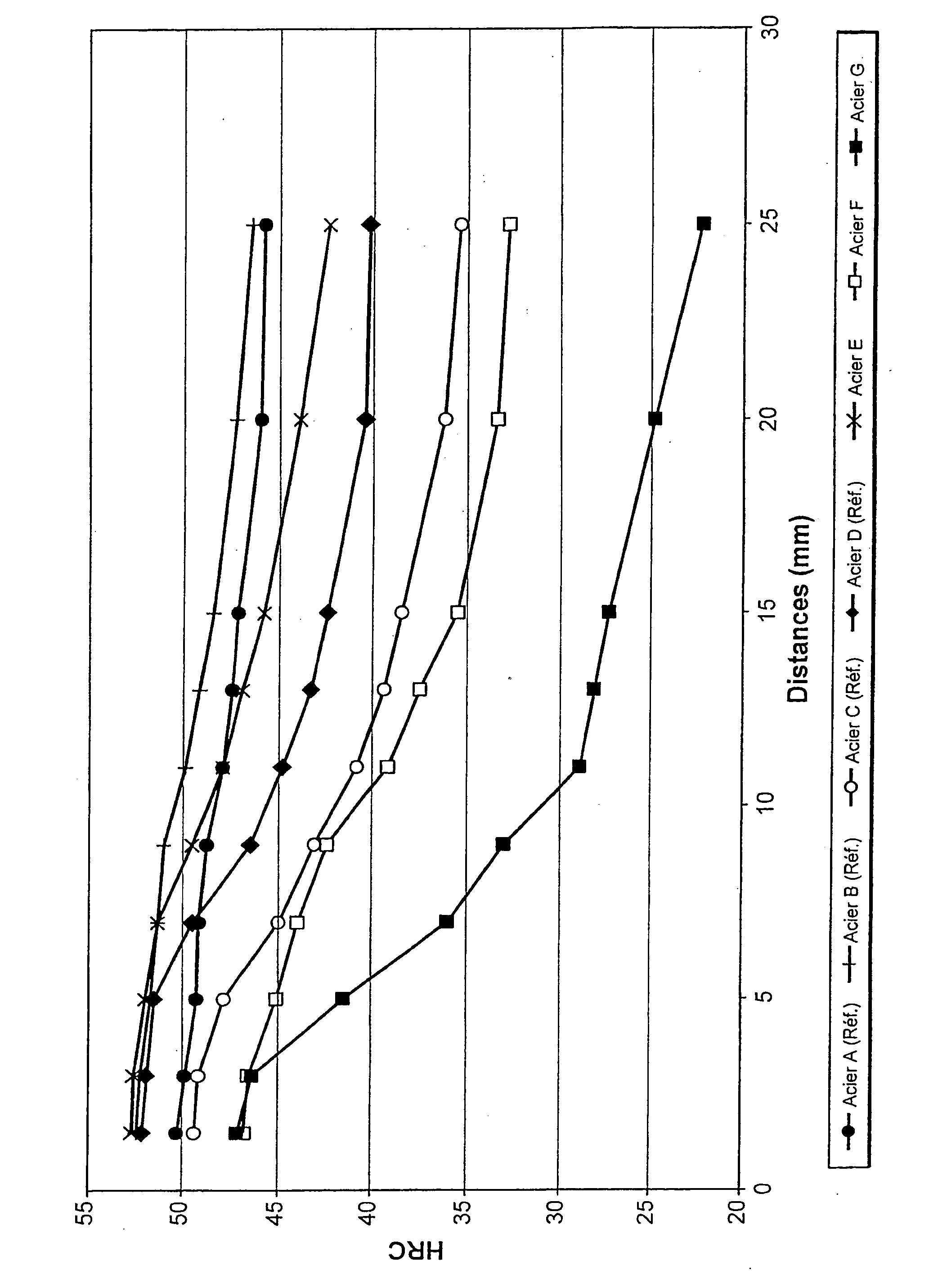Steel For Mechanical Parts, Method For Producing Mechanical Parts From Said Steel And The Thus Obtainable Mechanical Parts
- Summary
- Abstract
- Description
- Claims
- Application Information
AI Technical Summary
Benefits of technology
Problems solved by technology
Method used
Image
Examples
Embodiment Construction
[0063] The steel according to the invention is intended primarily for producing mechanical components which are subjected to high levels of stress, such as gear elements, and which are intended to be carburised or carbonitrided (preferably at low pressure or in a non-oxidising atmosphere to prevent oxidation of the most oxidisable elements), both at normal temperatures of approximately from 850 to 930° C. and at high temperatures in the order of from 950 to 1050° C. These components must have a high level of fatigue endurance, high strength, and must be only slightly deformed during thermal treatments, such as the quenching operation following the carburising or carbonitriding operation. It has the following composition (all the percentages are percentages by weight).
[0064] The carbon content thereof is between 0.19 and 0.25%. These contents are normal for gear manufacturing steels. Furthermore, this range allows the contents of the other elements to be adjusted, which allows the d...
PUM
| Property | Measurement | Unit |
|---|---|---|
| Temperature | aaaaa | aaaaa |
| Fraction | aaaaa | aaaaa |
| Fraction | aaaaa | aaaaa |
Abstract
Description
Claims
Application Information
 Login to View More
Login to View More - R&D
- Intellectual Property
- Life Sciences
- Materials
- Tech Scout
- Unparalleled Data Quality
- Higher Quality Content
- 60% Fewer Hallucinations
Browse by: Latest US Patents, China's latest patents, Technical Efficacy Thesaurus, Application Domain, Technology Topic, Popular Technical Reports.
© 2025 PatSnap. All rights reserved.Legal|Privacy policy|Modern Slavery Act Transparency Statement|Sitemap|About US| Contact US: help@patsnap.com


